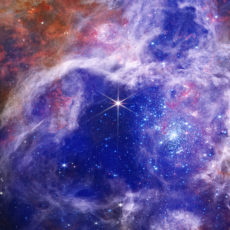
NASA’s James Webb Space Telescope captured a short time-lapse of the shimmering light echoes near Cassiopeia A, which is located 11,090 light-years from Earth. These cosmic curtains basically consist of interstellar gas and dust that have been heated by the flashbulb explosion of a supernova.
The light echoes you see were captured by Webb’s NIRCam (Near-Infrared Camera). This phenomenon occurs when a star explodes or erupts, flashing light into surrounding clumps of dust and causing them to shine in an ever-expanding pattern. Light echoes at visible wavelengths (such as those seen around the star V838 Monocerotis) are caused by light reflecting off of interstellar material. On the opposite end, light echoes at infrared wavelengths are caused when the dust is warmed by energetic radiation and then glows.
- Superior Optics: 400mm(f/5.7) focal length and 70mm aperture, fully coated optics glass lens with high transmission coatings creates stunning images...
- Magnification: Come with two replaceable eyepieces and one 3x Barlow lens.3x Barlow lens trebles the magnifying power of each eyepiece. 5x24 finder...
- Wireless Remote: This refractor telescope includes one smart phone adapter and one Wireless camera remote to explore the nature of the world easily...

We see layers like an onion. We think every dense, dusty region that we see, and most of the ones we don’t see, look like this on the inside. We just have never been able to look inside them before,” said Josh Peek of the Space Telescope Science Institute in Baltimore.













